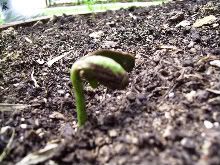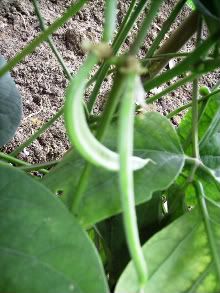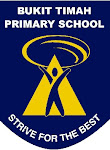It is important to differentiate coal and charcoal - fossil fuel v/s just trees that have been treated. Please also read the comments from Pauline who clearly states some of the benefits of charcoal. Also Xin Yi and Renise gave some relevant information on charcoal.
Maybe some of you can elaborate and make the differentiation clearer to the confused ones.
The comment by Yu Ling on the chemical potential energy of charcoal is well connected to the current P6 topic.
Also I agree that it's so much preferable to write in your own words to show what you understand. Short, concise comments do a better job than long explanations.
How To Soar in PSLE - BTPS Way!!
Interact with complex questions / graphs / pictures to pick up valuable clues (don't highlight - just use your pen to underline words or scribble notes)
Start with Booklet A and do it meticulously with full focus - explore all 4 distractors before making final choice.
MANAGE your TIME - to score well, you need to try to finish ALL questions.
Specific answers = answers that are relevant to question.
When confused, choose any of the following strategies:
1. Ask, "What Science idea is being used in question?"
2. Pose other questions to clarify your thoughts
3. COMPARE to another set-up
4. COMPARE to a reverse situation
5. Connect to your knowledge in life (yes, you do have lots of prior / other knowledge)
6. Break down your answer in steps before crafting final answer.
Common problems with wrong answers:
*Answers are generic/vague and do not connect to that specific question
*Answers are not scientific and do not explain using Science ideas
*Answers do not make use of data provided when asked
*Answers did not make comparisons - use words like more/most etc..when asked
BTPS supports all P6 in achieving their PSLE GOALS!!
Start with Booklet A and do it meticulously with full focus - explore all 4 distractors before making final choice.
MANAGE your TIME - to score well, you need to try to finish ALL questions.
Specific answers = answers that are relevant to question.
When confused, choose any of the following strategies:
1. Ask, "What Science idea is being used in question?"
2. Pose other questions to clarify your thoughts
3. COMPARE to another set-up
4. COMPARE to a reverse situation
5. Connect to your knowledge in life (yes, you do have lots of prior / other knowledge)
6. Break down your answer in steps before crafting final answer.
Common problems with wrong answers:
*Answers are generic/vague and do not connect to that specific question
*Answers are not scientific and do not explain using Science ideas
*Answers do not make use of data provided when asked
*Answers did not make comparisons - use words like more/most etc..when asked
BTPS supports all P6 in achieving their PSLE GOALS!!
Subscribe to:
Post Comments (Atom)
Science Around Me (SAM)
SAM is a Science journal that allows pupils to express themselves in their favourite ways about Science.
SAM is another great opportunity for pupils to THINK and TALK Science in a medium that is customised to their learning styles.
SAM allows teachers to informally assess understanding of the child and clarify misconceptions in their learning.
SAM is another great opportunity for pupils to THINK and TALK Science in a medium that is customised to their learning styles.
SAM allows teachers to informally assess understanding of the child and clarify misconceptions in their learning.
Factors Affecting the Environment by Gog Ru Yan - 6G

When Ice Changes into Water by Goh Chee Yan - 5G
Do you wonder whether the mass of ice changes when it melts into water. Try this out:
1. Put a few ice cubes into a plastic bag
2. Tie the mouth of the bag tightly
3. Weigh the bag of ice cubes (if there is condensation outside the bag, wipe it dry before weighing)
4. Place the bag in the sun
5. When ice has melted, wipe the outside of the bag dry (refer to step 3)
6. Weigh the bag
You will discover that the mass of the bag remains the same!
There is no change in mass when ice melts!!
1. Put a few ice cubes into a plastic bag
2. Tie the mouth of the bag tightly
3. Weigh the bag of ice cubes (if there is condensation outside the bag, wipe it dry before weighing)
4. Place the bag in the sun
5. When ice has melted, wipe the outside of the bag dry (refer to step 3)
6. Weigh the bag
You will discover that the mass of the bag remains the same!
There is no change in mass when ice melts!!
Simple Steps to fight Dengue by Elizabeth Wu 4C







1 comment:
Let me sumarise, "BBQ Char Cool" have said and lets work from there,
It is because of that it has high chemical potential energy that enables it to burn for so long.
------------By Yu Ling
Charcoal is actually sawdust or scrap wood partially burned in very hot ovens until it becomes what's called wood char. to make charcoal, wood or wood scraps are put in either a kiln or dryers to suck out moisture so they'll bake efficiently, then are typically cooked in cast iron retort ovens. Charcoal is pure carbon.The most common type of charcoal used are lump charcoal and briquettes.
Briquettes are convenient, inexpensive source of fuel. It can burn more consistenly and longer then lump charcoal but not quite as hot. Briquettes frequently contain other ingredients in addition to charcoal to improve the performance characteristics of the product.Charcoal can be burnt in power stations to turn generators to produce electricity. it can also be used to cook. In times of scarce petroleum, automobiles and even buses have been converted to burn wood gas (gas mixture containing primarily carbon monoxide) released by burning charcoal or wood in a wood gas generator.The porosity of activated charcoal accounts for its ability to readily adsorb gases and liquids; charcoal is often used to filter water or adsorb odors.Charcoal was also consumed in the past as dietary supplement for gastric problems in the form of charcoal biscuits.
---------- By Xin Yi
The benifit of charcoal is that it adsorbs(not absorb) more poison than other substance known to mankind.It also adsorbs bacteria , virus ,intestinal gas.It can also bring relief to bites and pains for a short while.Disadvantages of using charcoal are that it is not a clean fuel.Charcoal transport and storagecan be affected by teh loss of weight and it genarates more ash than LPG,Kerosen and Gelfuel.
-----------By Pauline
From what I researched, charcoal is a blackish residue consisting of impure carbon obtained by removing water and other volatile constituents from animal and vegetation substances. Charcoal is usually produced by slow pyrolysis, the heating of wood, sugar, bone char, or other substances in the absence of oxygen. The resulting soft, brittle, lightweight, black, porous material resembles coal and is 85% to 98% carbon with the remainder consisting of volatile chemicals and ash.
---------- By Renise
Lets stick to the instruction and give better awnswers!
Post a Comment